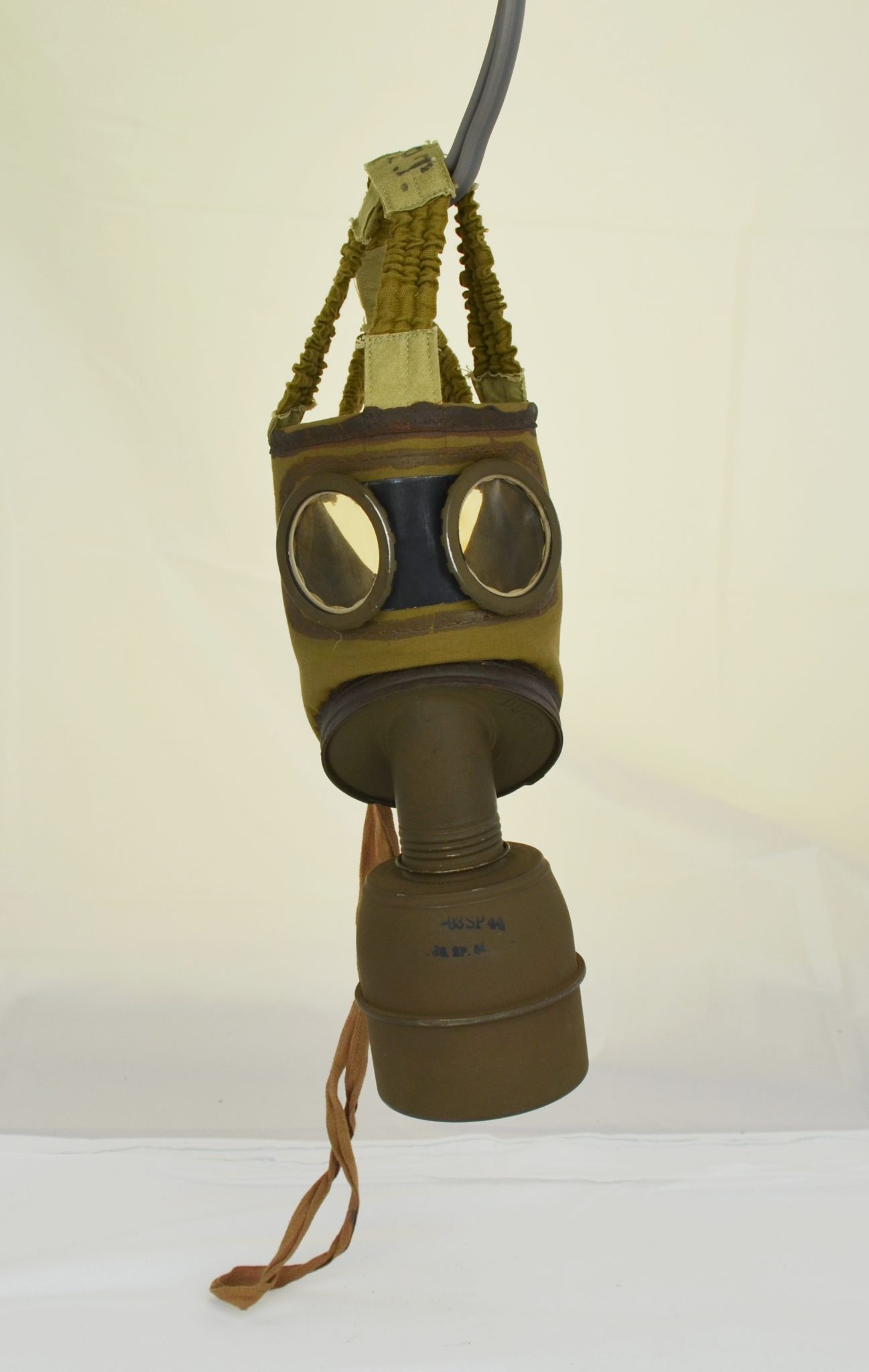

The allies soon added filter drums to their respirators as well. Finally, towards the end of the war the in 1916, the Germans added larger air filter drums to their respirators containing gas neutralizing chemicals. The hood fitted the head to the shoulders and had a mica window. It had a wool flannel hood entirely soaked in a solution called the Hypo solution, which was a mixture of sodium hyposulfite, sodium bicarbonate and glycerine. The result was the 'British Hypo Helmet' or, officially, the 'British Smoke Hood'. Next, since there were limitations of the Black Veiling Respirator it focused British attentions on a more effective and operationally practical replacement.

Now that’s a different level of dedication.After the first gas attacks by the Germans the British made crude masked made of cotton and a long cloth that was dipped in a solution of bicarbonate of soda (known as the black veil). He was the first to develop masks that effectively keep the gasses out by experimenting in his home laboratory-on himself. Thanks to scientists like John Haldane, gas masks were invented. Perhaps it’s another reason why it was called mustard gas?
GAS MASK WW1 SKIN
It wasn’t easy to detect, so soldiers may be showered with the mist and their skin would soak up in the chemical without them being aware until they start itching in places that would, later on, develop into large blisters filled with yellow pus. It is a cytotoxic agent that causes severe blistering upon contact on the skin.

1941-1945.Īlso known as sulfur mustard, it’s more of a fine mist than an actual gas. Mustard Gas World War II Gas Identification Posters, ca. Like chlorine, it causes the lungs to fill with liquid, called pulmonary edema, at a more severe rate. Throughout American involvement in the First World War, poison gas attacks killed and maimed some 2,000 American troops and countless more allies who had been fighting for years before the doughboys arrived. It was first used by the French in 1915 and was responsible for around 85,000 deaths the urine mask was no match for it. Many different gas masks were used on the Western Front, but one was more improvised than others. Phosgene is a colorless, highly toxic chemical. Photo from National Museum of Health and Medicine / Wikimedia Commons

Phosgene Gas “Phosgene smells like musty hay” (OHA 365), National Museum of Health and Medicine. Not that you wanted to wait for that to occur to know what kind of gas you were being attacked with. Perhaps they wanted to save their drinking water? One sure sign that chlorine gas was being used is that it would discolor the brass buttons on soldiers’ uniforms. They were the first and certainly the worst. This doesn’t mean they were considerably good. So, they could’ve used regular water, and it would’ve still worked. Answer (1 of 8): Gas masks in World War One were as effective as they could possibly get for the time. What they didn’t know was that even though their trick was effective, it was unnecessary. The rationale behind this was that the ammonia from urine would somehow neutralize the chlorine gas and prevent it from killing them. Our soldiers had to pee on rags, socks, or whatever piece of cloth they could find and use them to cover their faces to protect their lungs from the gas. Their solution: peeing on rags.Ĭhlorine Gas Chlorine gas leak. The doughboys (nickname for the American infantrymen during WWI) had to improvise. The thing is, we didn’t have sophisticated technology back then to create masks that could effectively combat these poison gasses, like the M50 Joint Service General Protective Mask. Troops instantly knew whenever it was deployed. Even so, chlorine gas wasn’t that effective of a weapon, as it has a yellow-green color that announces its grand entrance. It could cause fluid in the lungs, drowning people while on their death beds. It can damage the tissues of the eyes, throat, and lungs upon contact. Chlorine gas, on the other hand, is deadly. Still, it’s not lethal enough to kill people. As the name suggests, it causes irritation, coughing, burning sensations in the eyes, mouth, and nose, making you tear up. Tear gas was among the first gas poisons used. Common chemicals used were tear gas, phosgene, chlorine, and mustard gas, among all the others. The large-scale use of toxic chemicals as weapons was prevalent during World War I. That, for sure, was what pushed the American troops of WWI to pee on rags and towels (even socks) and use them as masks against poison gas attacks. They say necessity is the mother of invention, and that includes the necessity to live and survive.


 0 kommentar(er)
0 kommentar(er)
